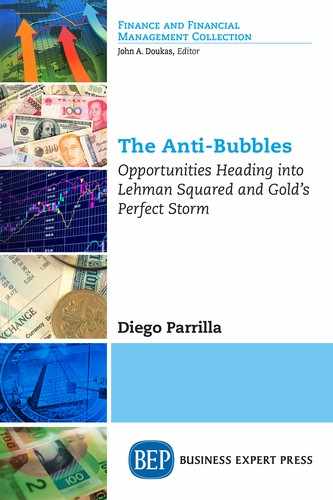We are living in extraordinary times. The next few months and years will witness and confirm whether an unprecedented monetary expansion without limits imposed by Central Banks and the subsequent desperate search for yield and a credit expansion without limits will go down in history as a stroke of genius or a reckless gamble.
To start my brief concluding remarks, I would like to give the necessary credit to the Central Banks for their bold and decisive actions during the Global Financial Crisis of 2008 and the European Government Bond Crisis of 2012. Borrowing the words form Mohamed El-Erian “Central Banks, acting boldly and innovatively in the midst of the massive financial crisis, helped the world avert a multi-year depression that would have wreaked havoc on our generation and that of our children.” I could not agree more.
At the same time, and perhaps victims of their own success, the Central Banks and Governments have in my view gone too far in their actions and experiments. Currency wars and contagious monetary policy have pushed us in a spiral that is testing the limits of monetary policy, pushing us into the uncharted territory of money printing, negative interest rates, and beyond. The success of these measures reinforced the perception that Central Banks are infallible and in full control, feeding a beast called complacency that ignores risks, rewards speculation, and exacerbates global imbalances.
At the time of writing, it is widely accepted that the collective actions of the Central Banks and Governments have contributed to the distortion of financial asset valuations across global markets. Asset prices would not be where they are without their aggressive intervention. Time will tell if the hefty prices of global bonds and equities are a fair reflection and anticipation of a solid and durable economic recovery—which we all hope and wish for—or a grossly distorted view of reality and expectations for future growth.
Whatever happens, it is also clear that this process of financial asset inflation has been fully intentional. Central Banks set and kept interest rates and government bond yields into unchartered territory by choice, undoubtedly influencing the decisions and actions of lenders and borrowers.
The lenders, faced with the need to generate income, have been forced to lend for longer maturities, to weaker credits, and for lower yields, often incurring excessive and undesired leverage.
The borrowers have taken advantage of this tsunami of cheap and free money. In some cases, the additional debt incurred will be deployed in good investments, in some cases in marginal investments, and in some cases in bad speculative investments that generate overcapacity, misallocate capital and, of course, build bubbles. Time will tell how much damage has been done.
The current dynamic faces an additional problem; a conflict of interest between Central Banks’ priorities. On the one hand, to ensure financial stability, in my view their main mandate. On the other hand, to generate employment and economic growth, important, but always within the boundaries of financial stability. The structural deflationary pressures that result from globalization, overcapacity, or the Flattening of the Energy World, among others, have given the Central Banks the comfort to push full steam ahead in their monetary expansion. But beyond the optical illusion of deflation, the second- and third-order effects that are inflating asset valuations may burst back into an even greater deflationary spiral. A dangerous and delicate balance that may be fueling one of the greatest bubbles in financial history. A dynamic that makes me wonder “who polices the police.”
The complacent belief that Central Banks are infallible and in full control is at the core of the surge in financial asset valuations, perception of low risk, and surge in structural leverage. Time will tell if the belief will be confirmed or will become a misconception, but the current polarization of views across market participants is a clear indication in my view that the twilight period—where both beliefs and misconceptions co-exist—has already started.
At the time of writing, an overwhelming majority of the market is accepting the beliefs that support current valuations with full complacency, without questioning or understanding the risks they are taking. A small minority, which includes myself, holds the opposite view and challenges these beliefs as misconceptions. Time, as is always the case, will tell.
The timing for a potential bust is unknown—and, who knows, it may never happen—but there are many catalysts lurking in the background that could trigger and accelerate the transformation of beliefs into misconceptions.
Unlike previous crises, the enormous size and global scope of the distortions in asset valuations and misallocations poses risks that are dramatically larger than anything we may have seen in the past: a Lehman Squared scenario, as I call it.
The anti-bubbles—assets that are artificially deflated by misconceptions—such as gold, implied volatility, and implied correlations, have the potential to be both attractive value investments and hedges against financial bubbles.
Yet, as Winston Churchill told us “Success is not final. Failure is not fatal. It is the courage to continue that counts,” because whatever the outcome, whoever the winners and losers ahead of us, life will go on. Yet, I hope the ideas and framework presented in this book will help you avoid the dangers and capture the opportunities ahead of us. Help you both win by winning, and help you win by not losing.
I know this final comment may sound strange, but please trust me when I say that I sincerely hope my fears and investment thesis of Lehman Squared and Gold’s Perfect Storm will be proven wrong. Being correct in my predictions would not be a happy outcome for the world. The asymmetry and size of the risks are just too large to ignore. As Benjamin Franklin wisely taught us, “if we fail to prepare, we should prepare to fail”. I suggest we better prepare. Anti-bubble.
